Do Your Sharps Containers Live Up to CSA Standards?

When it comes to ensuring that healthcare professionals are protected against the risks of needlestick injuries, there are few solutions more critical than engineering controls like sharps containers. These devices are crucial for preventing unnecessary exposure to needlesticks and resulting infection risks, but not all sharps containers are created the same.
In fact, although the CSA Group has published detailed standards on requirements for single-use and reusable sharps containers that align with global ISO standards, the reality is that many waste vendors provide containers that do not meet those standards.
That means that many healthcare professionals are working with sharps containers that could leave them exposed to bloodborne pathogens and potential infections. In order to ensure the safety of healthcare professionals, it’s important to understand both the scope of CSA standards and the importance of ensuring access to containers that meet those standards, like Daniels Sharpsmart.
TOPICS WE WILL COVER:
1 / CSA Standards Requirements
CSA Standards Requirements
In order to ensure the safest sharps disposal containers, the CSA has adopted CSA Standard CAN/CSA-Z316.6-14, which includes the following requirements:
Container Stability
What the standard says: The container shall not topple over when tested in accordance with 5.1. (Note: 5.1 and all similar numbers in this blog are a reference to the specific section of the CSA standard.) Containers recommended for use with a wall mount and pocket collectors are excluded from the requirement specified in 5.1. The requirement applies to containers intended for use on a horizontal surface. Sharps containers intended to be used with a secondary stabilizer shall be tested in conjunction with that device.
How Daniels Health complies: Our containers have been tested by independent engineering laboratories. The testing met the requirements for toppling, and all testing certificates can be provided.
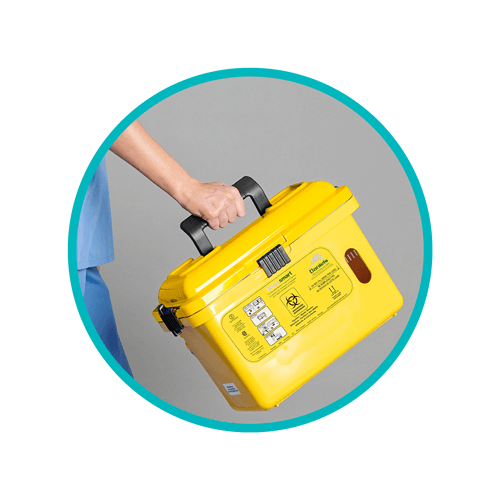 Strength of Handles
Strength of Handles
What the standard says: All sharps containers excluding pocket collectors shall be provided with one or several handles. When tested in accordance with 5.2, the handle/carrying feature shall not break or detach during testing. The position of the handle(s), finger recesses,
protrusions or flanges shall not interfere with the normal use of the container. Finger recesses, if present, shall be sited above the fill line. This requirement does not apply to pocket collectors.
How Daniels Health complies: Our pre-assembled ergonomic handle is located about the fill line. This handle will not break or detach during use and was not broken or detached during testing to the standard.
Aperture and Closure | General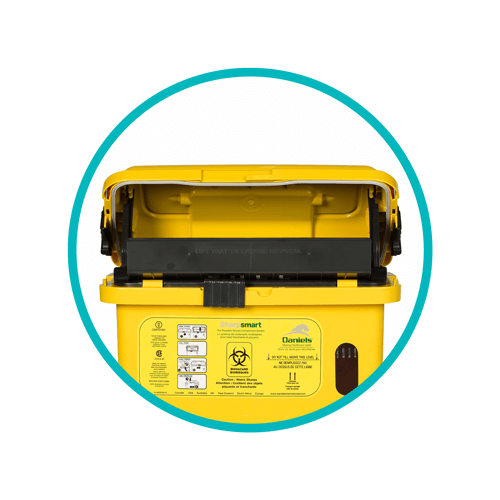
What the standard says: Single-use sharps containers shall be provided with a closure feature that is integrally attached. Pocket collectors intended for single devices are excluded from the requirements regarding attachment of the closure device. The aperture shall be designed to minimize the potential for accidental sharps injuries during placement of sharps into the container.
How Daniels Health complies: Our container has the largest aperture for sharps disposal in a reusable container. This aperture allows for the safety tray to be present in our container. This tray allows for hands-free disposal, mitigating the risk of accidental sharps injuries.
Requirements for the Aperture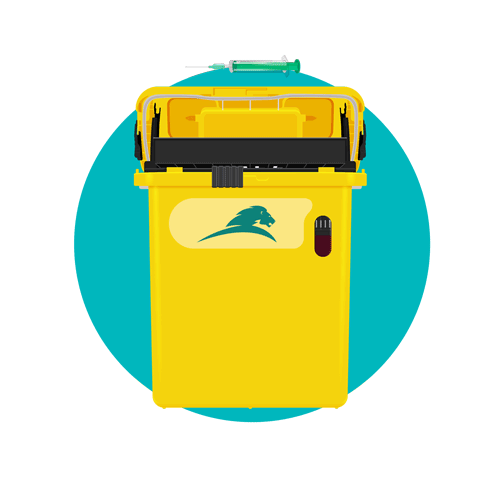
What the standard says: It shall be possible to place sharps into the sharps container without using a second hand to manipulate the aperture. The aperture of containers intended to be placed in public access areas should be designed to restrict hand entry and removal of contents from the container. NOTE A risk assessment should address the risk of overfilling.
How Daniels Health complies: With Daniels Sharpsmart, sharps can be deposited without touching the container. The tray was designed to discard the sharps using a counter-weight system. This will allow end users to place the sharps on the tray, and the tray will discard the sharps for them. The tray then returns to the open position to receive additional sharps. Our container trays are designed to restrict hand access at all times once the sharps are discarded into the Sharpmsart containers, you cannot access the waste again.
Requirements for the Closure Feature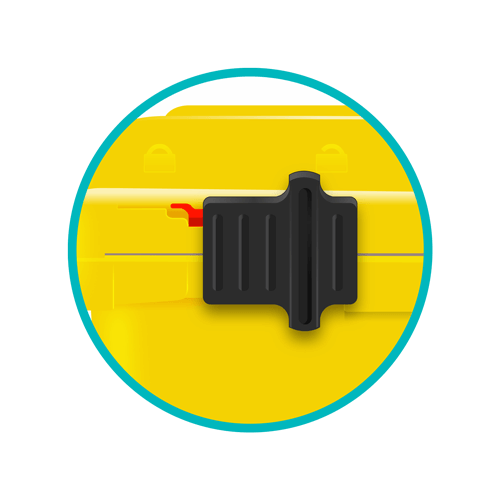
What the standard says: Closure features shall be capable of being closed without the risk of sharps injury to the user. The permanent closure, once activated, shall be resistant to manual opening. Pocket collectors should be provided with a permanent closure.
How Daniels Health complies: Our containers are equipped with closure points located outside of the waste deposit area. This will ensure there is no risk of injury while closing the Sharpsmart container. Once permanently locked, the container cannot be opened until our hands-free robotic Washsmart machine unlocks the container.
Resistance to Penetration
What the standard says: When tested in accordance with 5.3, the force needed to penetrate test specimens shall be not less than 15 N.
How Daniels Health complies: Our containers have been tested by independent engineering laboratories. The testing met the requirements for penetration, and all testing certificates can be provided. Further, the Daniels Sharpsmart container is the only sharps container that does not have an FDA reported incident of sharps penetration.
Resistance to Damage or Leaking after Dropping
What the standard says: When tested in accordance with 5.4, there shall be no evidence of leakage and no breach of the sharps containment area.
How Daniels Health complies: Our containers are leak-proof in all orientations. When drop testing was completed, there was no spillage or breach of the sharps containment area.
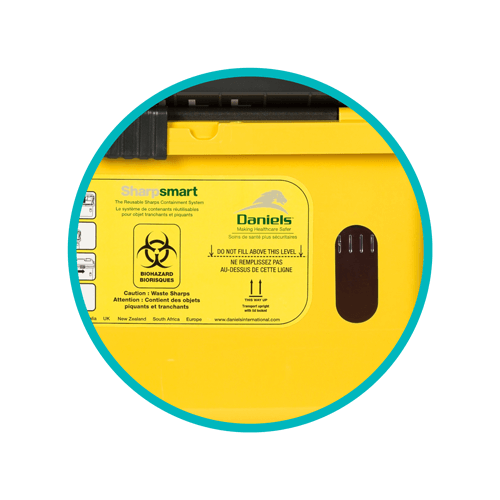 Fill Line Indicator
Fill Line Indicator
What the standard says: The fill line indicator shall be determined by the design of the container, taking into account the risk of sharps extending above the fill line, and shall be at a level no greater than 85 % of the total capacity of the container. A fill line indicator is not mandatory for pocket collectors.
How Daniels Health complies: Across our collection, the fill line can be visibly seen on the outside of the container. This fill line is located at the 85% total capacity mark. In addition to the visible fill line on the outside of the container, the Sharpsmart line comes equipped with passive overfill protection. The sharps container will not physically allow sharps deposits once the contents have reached the fill line.
Labelling and Marking
What the standard says: Any marking or labelling on the container that is essential for safe use shall be visible and easily legible. Marking or labelling shall comply with local, national or regional requirements. Marking or labelling on the container should include the following information.
- A clear indication of the fill line.
- Appropriate hazard symbols.
- The word “DANGER” or the equivalent wording in the language of the country where the container is used.
- Identification of the specific use (where applicable) of the container (e.g., chemotherapy, biohazard).
- An indication that the container is not re-usable.
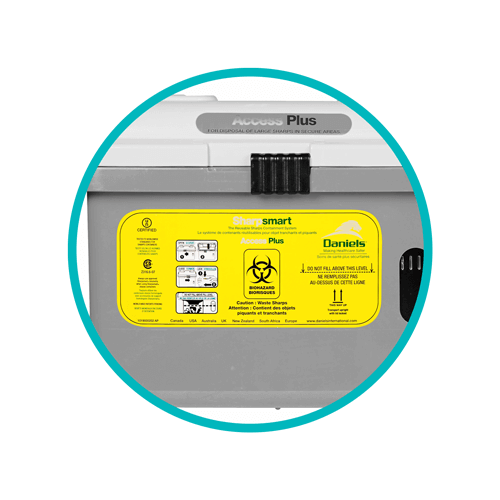
- Identification of the total and/or fill volume of the container.
- Name and address of the manufacturer. Where national legislation allows, a trademark, logo or website address may be sufficient to identify the manufacturer, provided that traceability can be established. The actual corporate name, which can be preceded or followed by the name of the particular division of the corporation, may be sufficient.
- Lot or batch identification.
- Commercial reference for the container (e.g., product code, re-order number, model number).
How Daniels Health complies: Our containers meet and exceed the above requirements for labelling and marking.
Instructions for Use
What the standard says: Instructions for use, required for the safe assembly, use, closure, handling and storage of the container, shall be made available by the manufacturer. The instructions for use should minimize the potential for accidental sharps injury. Drawings, pictograms or other graphical aids may be used where applicable. Instructions for use shall include the following, as applicable:
- Instructions for proper and secure assembly of the container before use, and any required stabilizing accessories;
- Correct method for placement of the sharp in the container;
- Correct filling of the container to the fill line, including specific instructions not to overfill;
- Correct, verifiable closure of the container when the contents have reached the fill line;
- Correct procedure for lifting or handling the container when it has been filled (to fill line only) and closed as per manufacturer’s instructions;
- Any other warnings or precautions that the manufacturer deems appropriate to assist the user in the safe use of the container.
How Daniels Health complies: our containers meet and exceed the above instructions for use
The Daniels Difference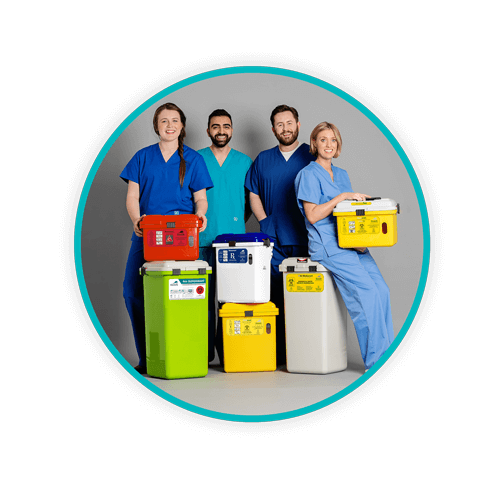
At the core of Daniels Health is our belief in a mission of Making Healthcare Safer, so when it comes to compliant container design, we are committed to ensuring our containers meet and exceed all requirements. It is not just the right thing to do, but it helps protect the safety of healthcare professionals, preventing against needlestick injuries and the unnecessary exposure to bloodborne pathogens that result from them.
If you are unsure whether your current vendor provides compliant sharps containers, reach out to us and we can help you determine whether you need to make any changes. For more information about our Sharpsmart products and healthcare waste solutions, contact one of our knowledgeable representative today.
Let's Talk!
Your time is valuable, and we don’t want to play hard to get. You can either phone us directly on the details listed on our contact page, or feel free to fill out this short form and one of our team members will get back to you as quickly as possible.
